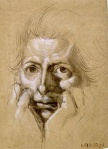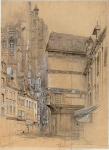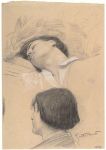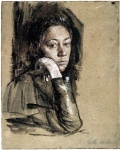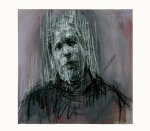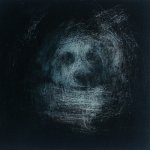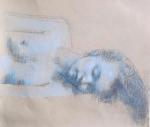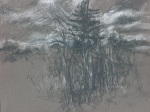“It’s so fine and yet so terrible to stand in front of a blank canvas.” -Paul Cezanne
When we think of paper we usually think of a clean white page, but working on white paper is a relatively recent convention in drawing. Throughout the centuries drawings have mostly been executed on toned papers of various sorts. A toned paper has one advantage over white in that its darker tone immediately addresses nature’s preponderance of middle values, allowing the artist to move off in both directions from the middle-ground, toward the upper reaches of the value scale by adding white, or toward the darker end by using a dark medium.
In the hands of the masters of any time period two compelling qualities stand out in works on toned grounds. The first is unity. The pervasiveness of the toned ground in all parts of the drawing generates a virtual atmosphere in which all parts “live, move, and have their being.” The color of the page is like family blood, so to speak, tying the whole together in ways that are much more challenging to do when working on a white drawing page. On white, the entire value scale must be added and calibrated without the reference of the middle ground. The dominant lightness of a white drawing page can deceive the eye in the initial stages of the drawing, making even relatively light marks appear much darker at first.
The second quality is economy. Economy of means is almost always a quality of great drawings, of any sort, but drawing on toned paper makes it easier to do more with less. In toned-ground drawings whole parts of the drawing are effectively untouched, yet they participate fully in the expression of form and space. The added darks and lights activate the recessive nature of the ground, shaping it, giving it form and inviting it to participate in the whole. Like the silent intervals between musical notes, the ground becomes an active player in the structure of the drawing by the action of the dark and light notes.
And finally, with a nod to Cezanne, a toned paper is somehow just not as blank at the beginning as a white one!
A selection of drawings, past and present, that demonstrate the unique potentialities of drawing from the middle ground.













